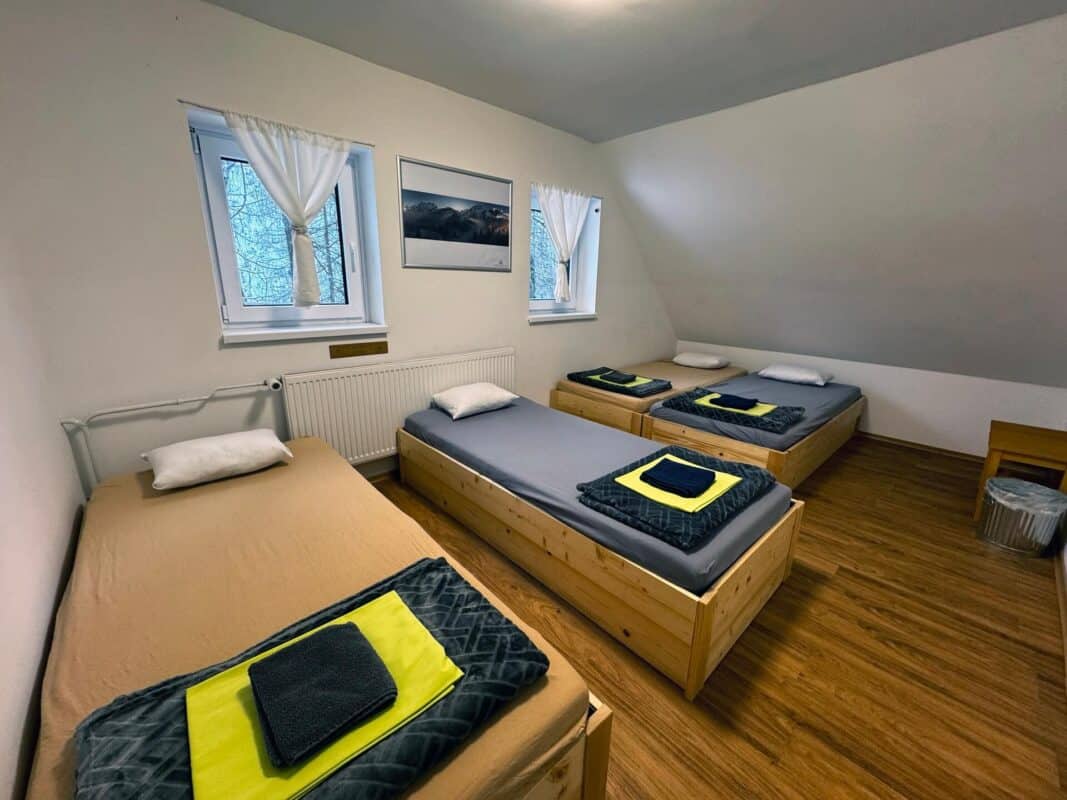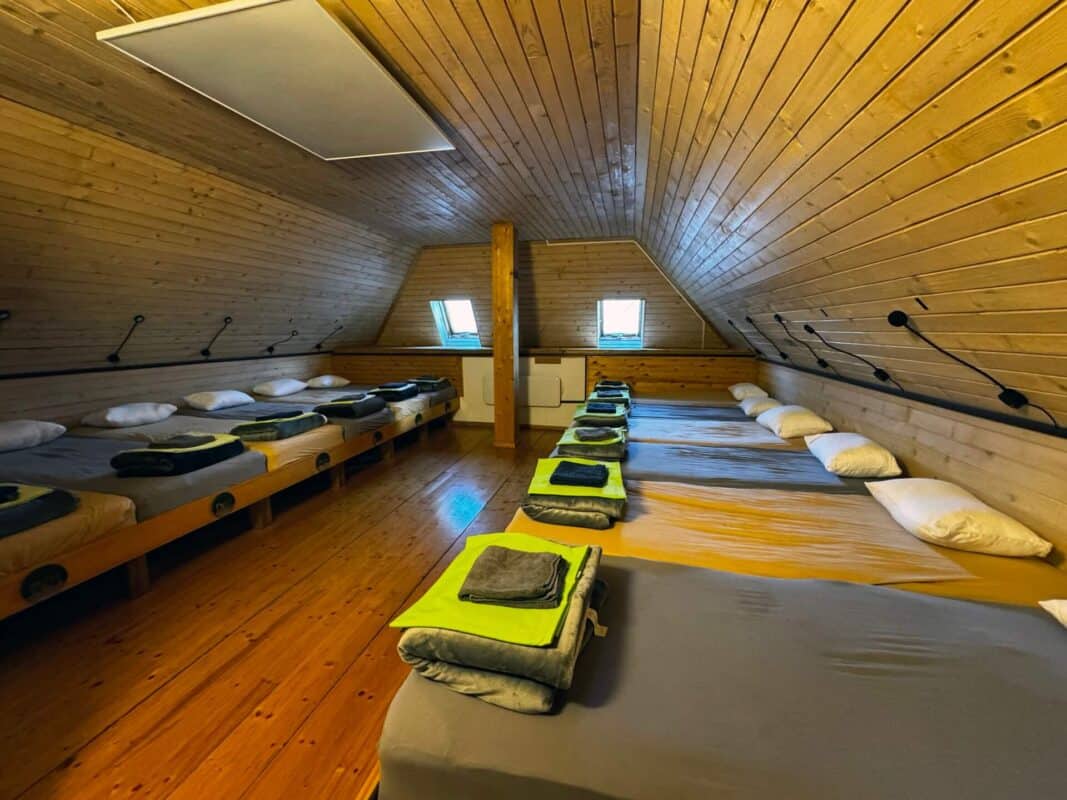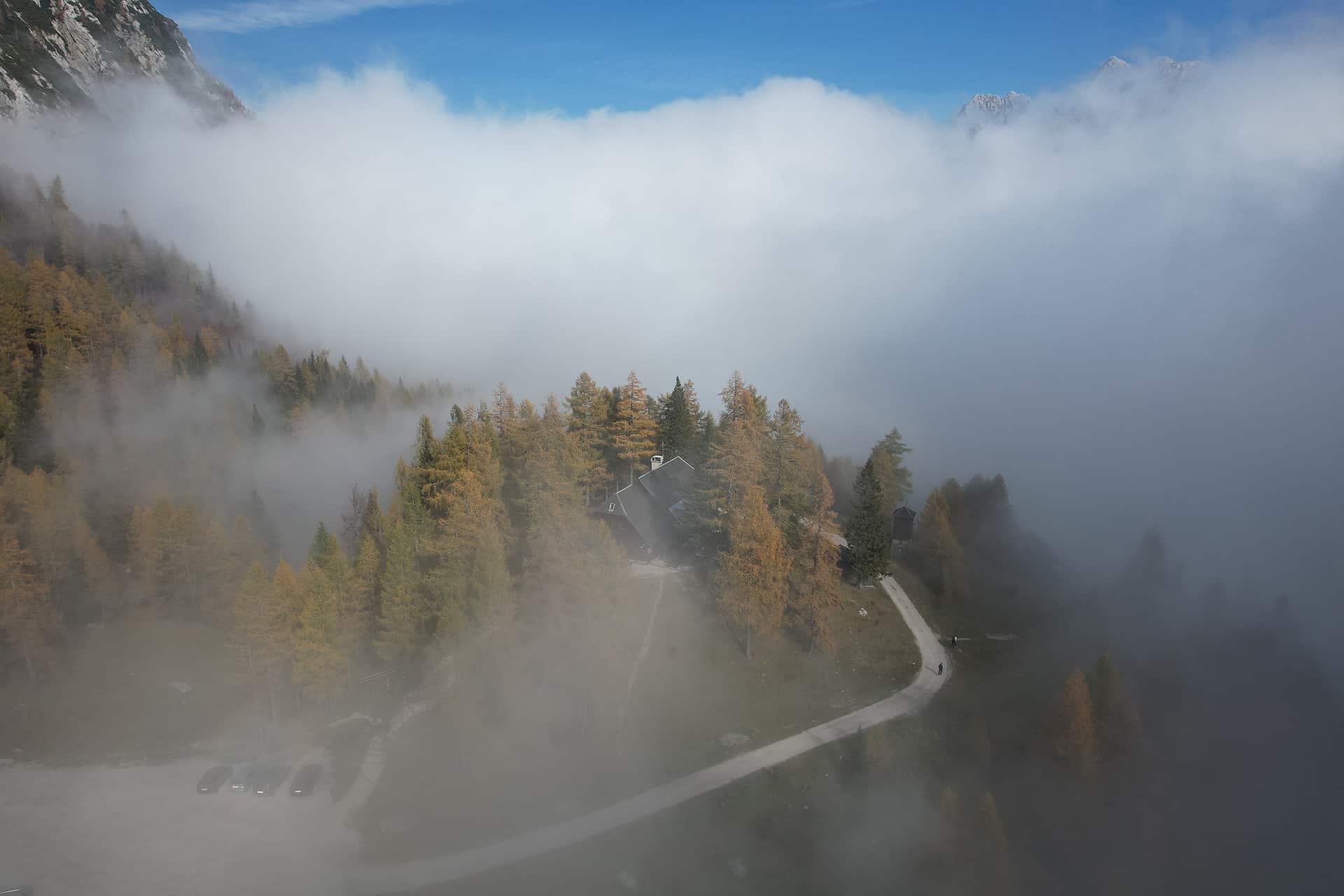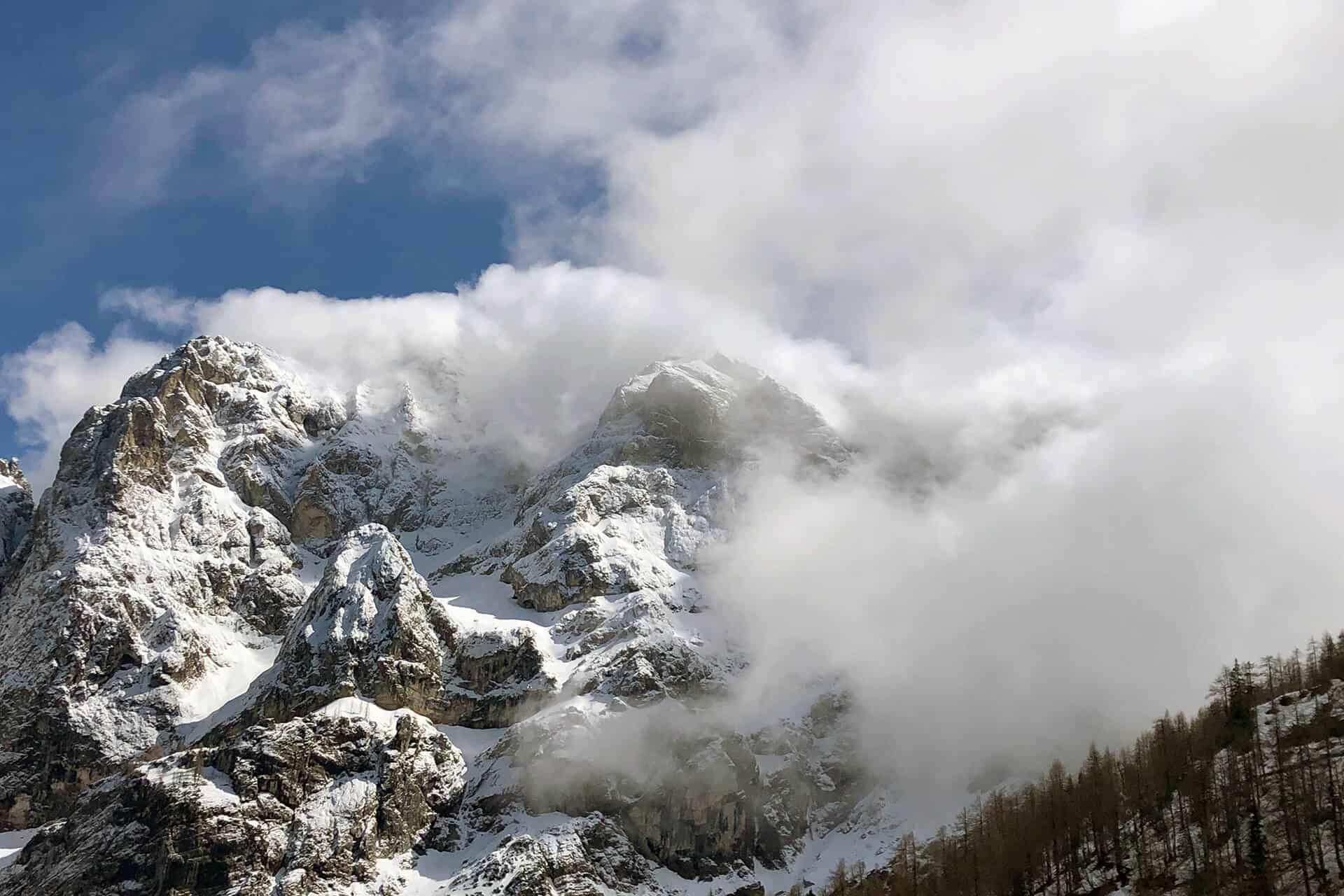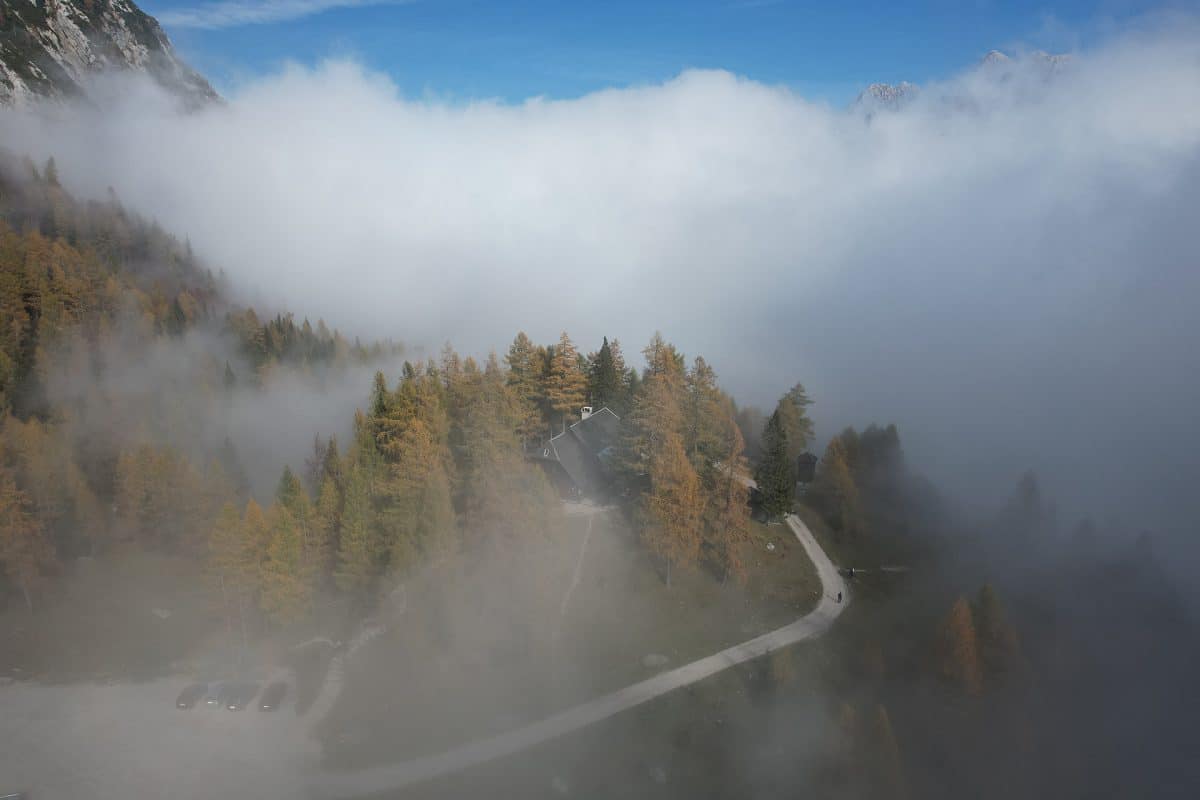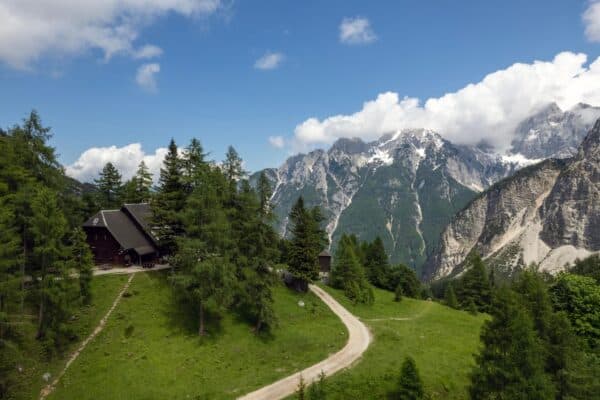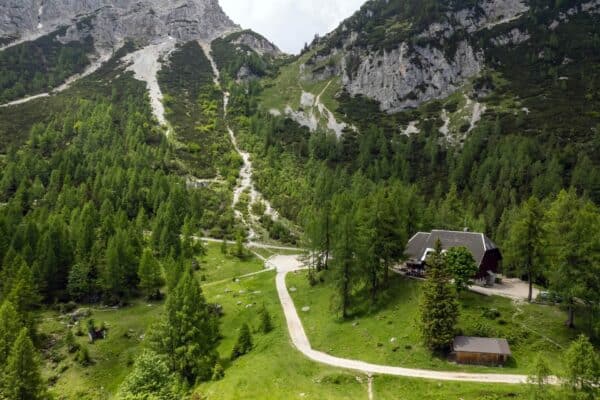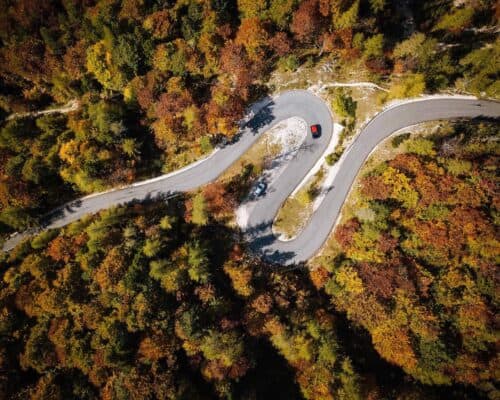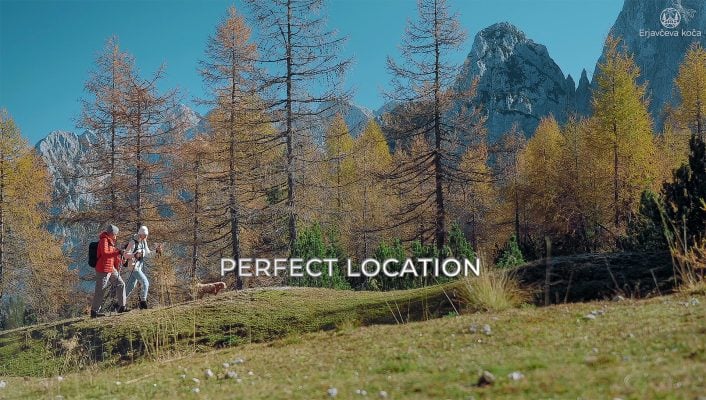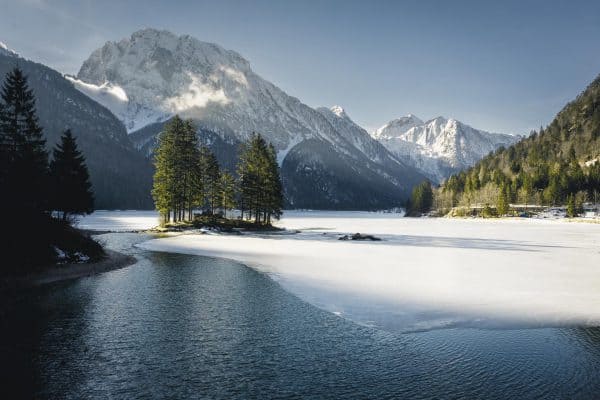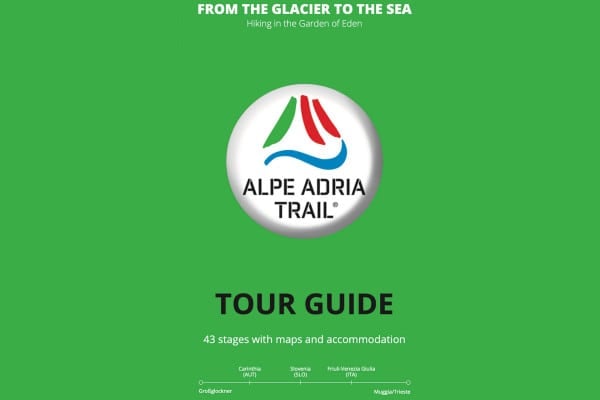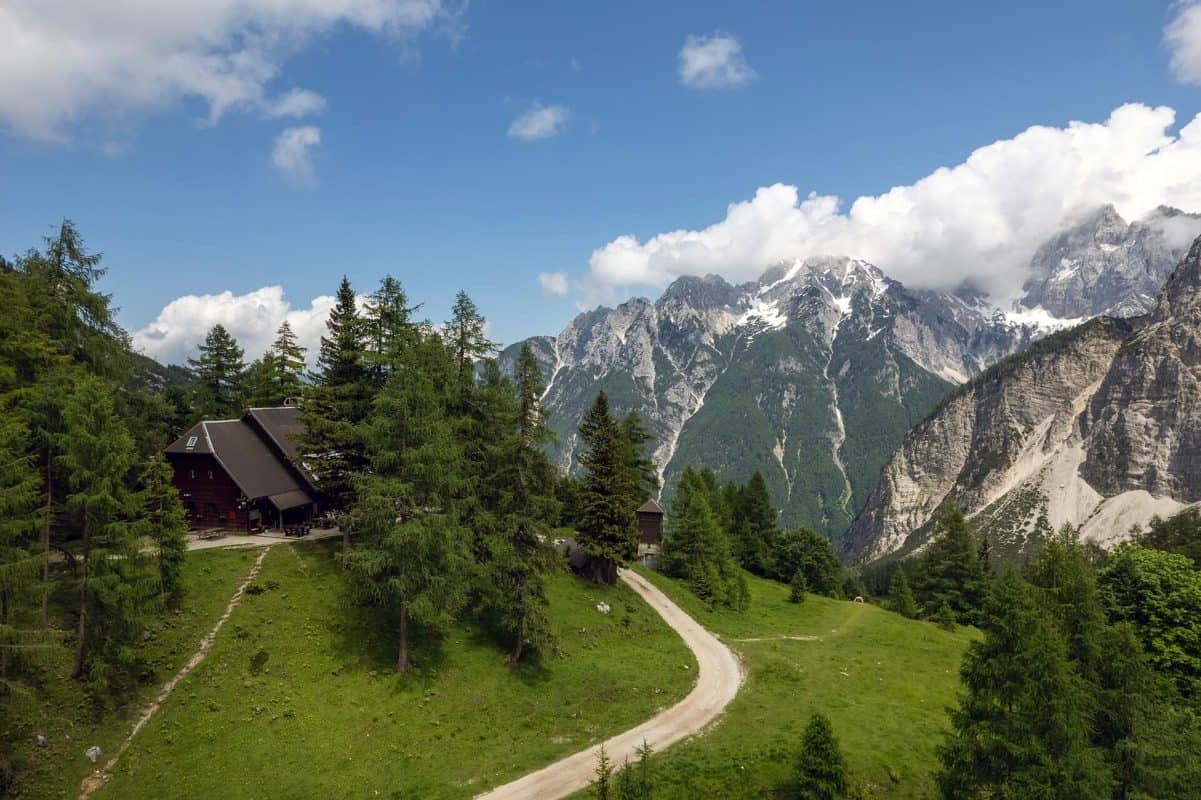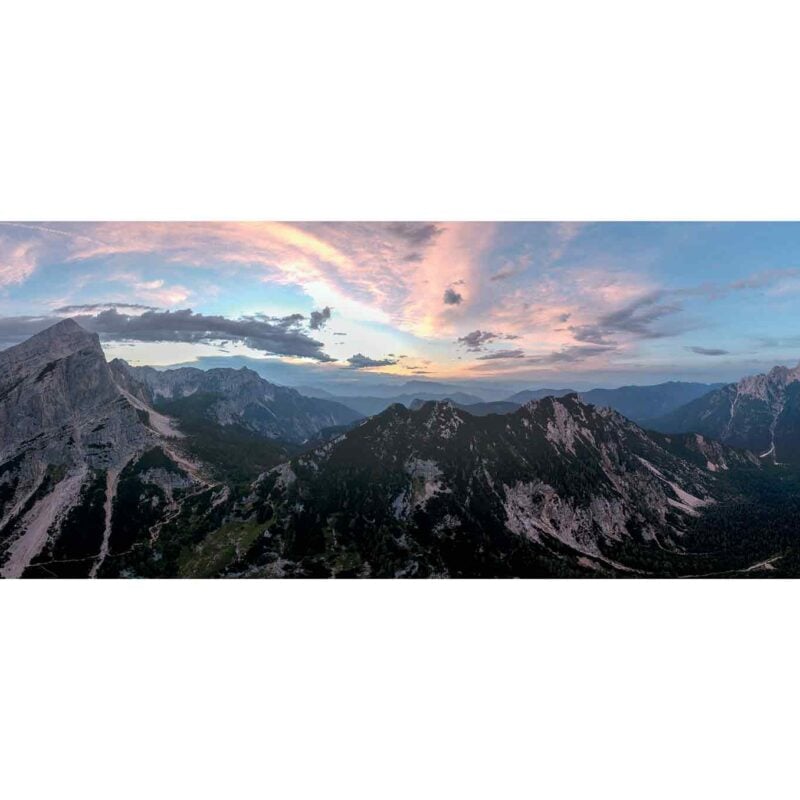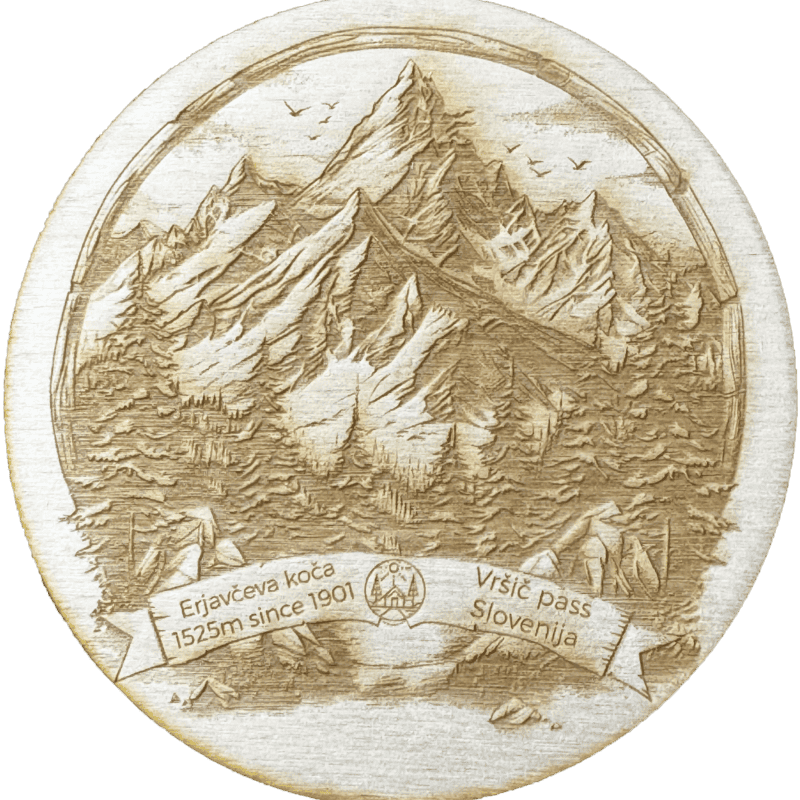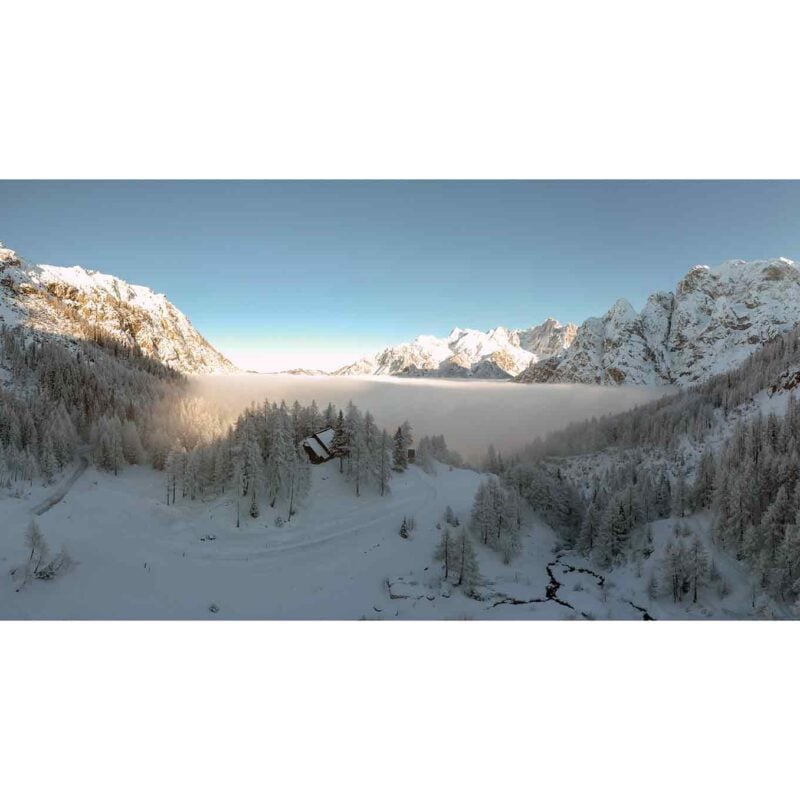Weather and traffic on Vršič pass
Twitter and live cameras
This post is also available in:
![]()
![]()
![]()
Twitter and live cameras Vršič
Twitter and live cameras
To share all vital information in real-time, we decided to open Erjavčeva’s hut Twitter account @erjavcevahut
Twitter and live cameras
WEATHER AT VRŠIČ PASS
Erjavčeva’s hut view towards Prisank (2547 m)
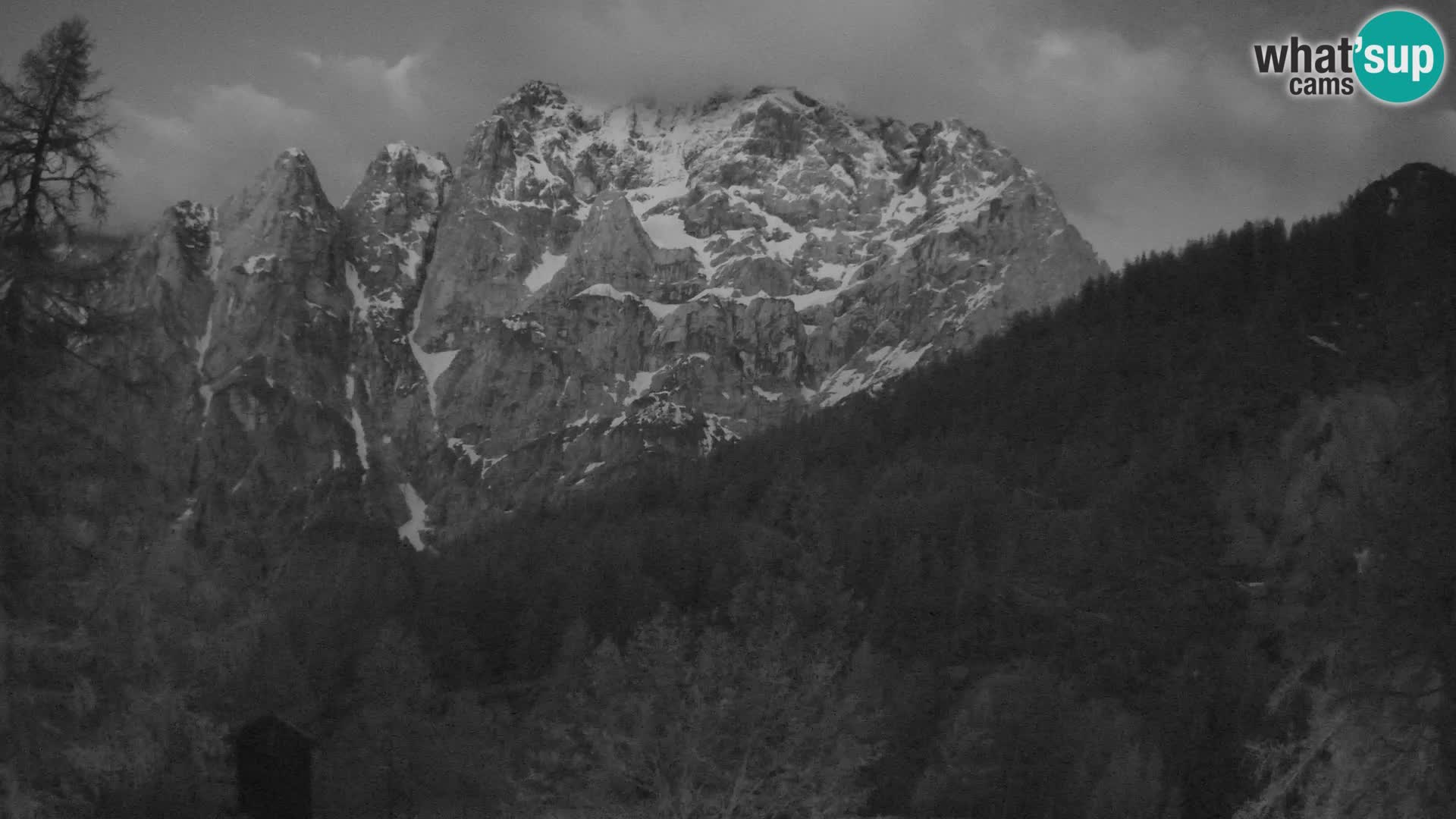
Erjavčeva’s hut view towards Vratca (1807 m)
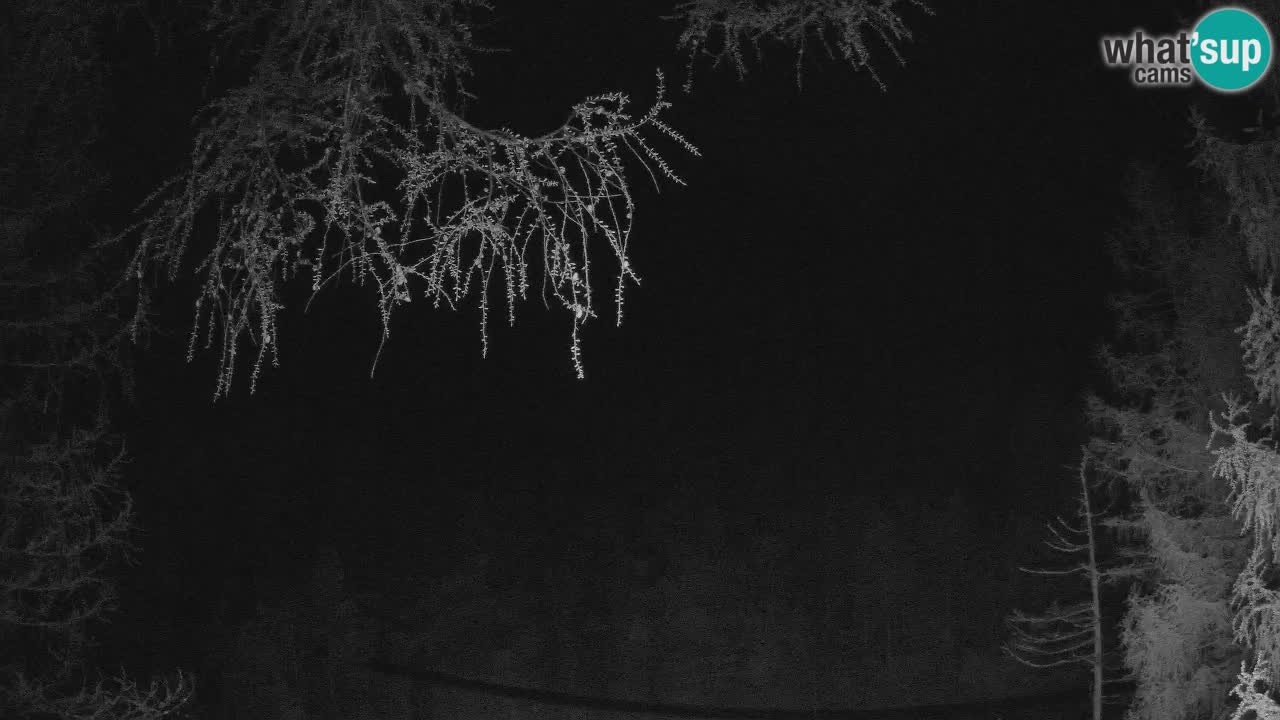
Twitter and live cameras
Twitter and live cameras Vršič
You can always check live cameras for reliable and accurate information about the weather and traffic on Vršič pass.
Gorenjska, or the Slovenian Alps as it is most commonly called in English, has a moderate Alpine climate with distinctive seasons that change quickly and noticeably.
Although the climate in the Slovenian Alps can be a little chilly at times, the summer months are pretty warm. From mid-June to August, the fine summer weather in the Slovenian Alps results in daytime averages between 20°C and 25°C. However, with some strong sunshine, temperatures can often rise higher.
The winter season in the Slovenian Alps tends to be quite long and stretches between November and April. Winter weather is cold, with freezing nights and heavy periods of snow. As soon as spring arrives, the climate quickly changes, the days become longer and the sunshine is more plentiful.
When to go – the best time to visit Slovenian Alps
The winter climate arrives early (mid-November), with heavy overnight frosts adding a noticeable crispness to the air, followed soon by spells of snowy weather. Spring is usually quite late, but by the middle of May (or sometimes late April), flowers bloom, and the trees quickly burst into life, with daytime temperatures staying above 10°C. The summer climate is a popular time to visit the Slovenian Alps. Autumns in the Slovenian Alps are short-lived since the winters can be extended.
SLOVENIAN ALPS YEARLY WEATHER SUMMARY
What’s the best time to visit the Slovenian Alps? Here are some facts:
June, July, August, and September have pleasant average temperatures.
– July is the warmest month, with an average high of 23,8 °C and an average low of 10,5 °C.
– July is also the month with the most sunshine, with almost 9 hours per day.
– January is the coolest month, with an average high of 1,6 °C and an average low of -8,8 °C.
– October is the wettest month, with an average of 164 millimetres of precipitation.
– April, November and December are the most cloudy months, with an average of 11 mostly cloudy days.
– February is the driest month, with an average of 57 millimetres of precipitation.
– January is the month with the highest number of days with snow cover, which is 29 days.
– February has the most snowfall, with a little over 46 centimetres on average.
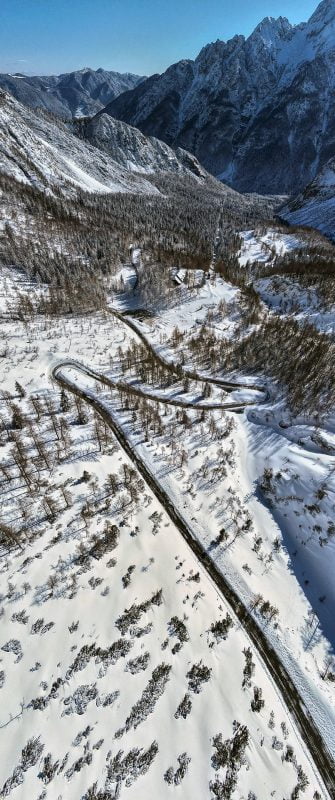
Twitter and live cameras
Accommodation in a mountain hut
 English
English
 English
English
 Dutch
Dutch
Trips and Hikes around the hut
Your next destination in slovenia?
Erjavčeva mountain hut is open the whole year. Reserve your stay and spend some time in the natural paradise of Triglav National Park (UNESCO) near Kranjska Gora on Vršič mountain pass in the heart of Triglav National Park.
Reserve your stay English
English
 English
English
 Dutch
Dutch
Souvenirs Online Shop
Pedestal
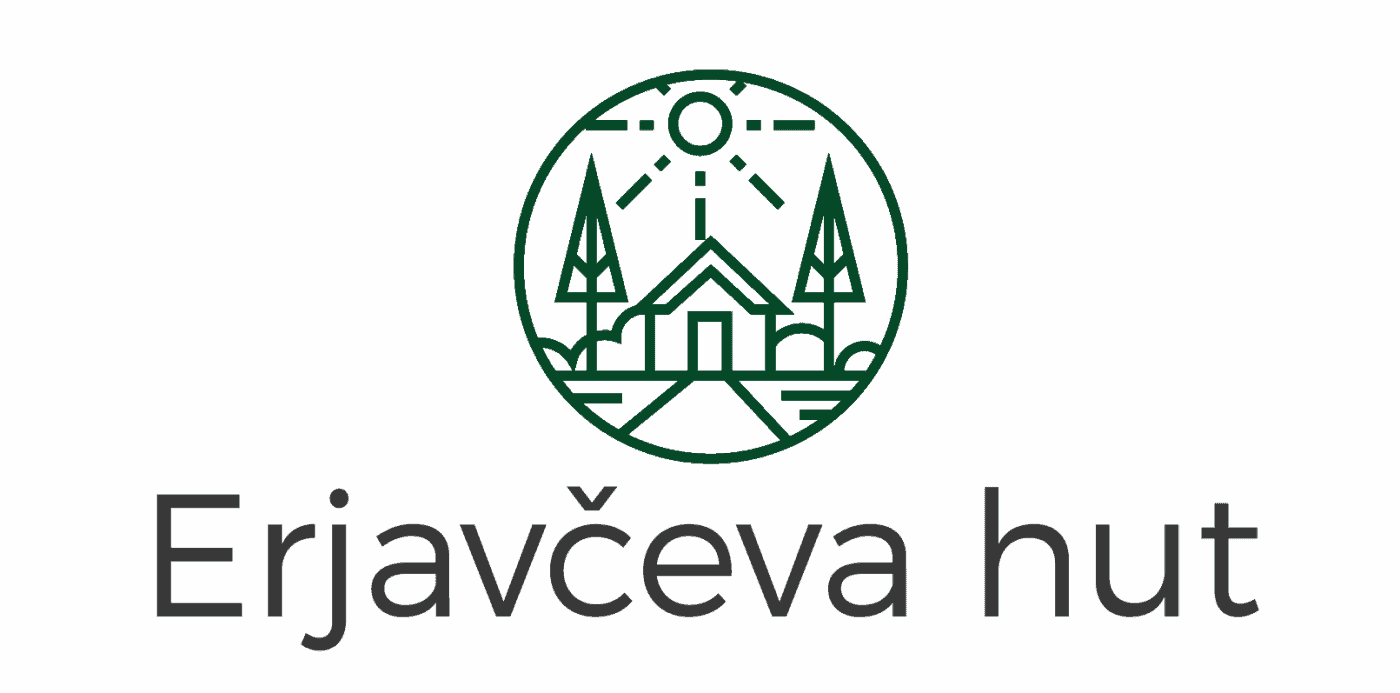

 Deutsch
Deutsch